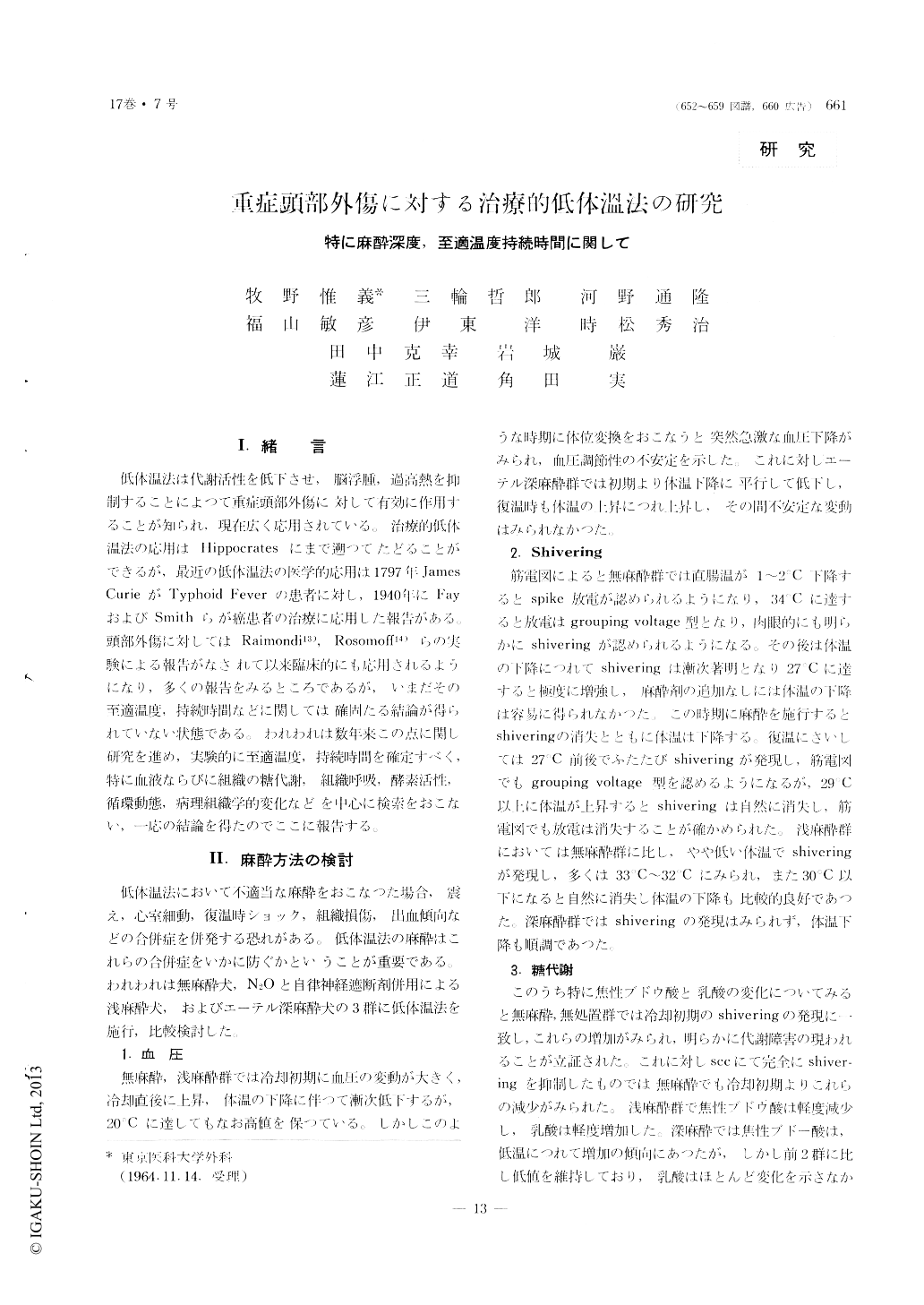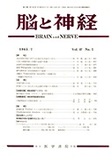Japanese
English
- 有料閲覧
- Abstract 文献概要
- 1ページ目 Look Inside
I.緒言
低体温法は代謝活性を低下させ,脳浮腫,過高熱を抑制することによつて重症頭部外傷に対して有効に作用することが知られ.現在広く応用されている。治療的低体温法の応用はHippocratesにまで遡つてたどることができるが,最近の低体温法の医学的応用は1797年James CurieがTyphoid Fever の患者に対し,1940年にFayおよびSmithらが癌患者の治療に応用した報告がある。頭部外傷に対してはRaimondi13), Rosomoff14)らの実験による報告がなされて以来臨床的にも応用されるようになり,多くの報告をみるところであるが,いまだその至適温度,持続時間などに関しては確固たる結論が得られていない状態である。われわれは数年来この点に関し研究を進め,実験的に至適温嵐持続時間を確定すべく,特に血液ならびに組織の糖代謝,組織呼吸,酵素活性,循環動態,病理組織学的変化などを中心に検索をおこない,一応の結論を得たのでここに報告する。
We have studied the therapeutic hypothermia for the serious head injury; especially about the anesthe-sia method, glucos metabolism of the blood and the tissues, tissue respiration, oxpgen activity, circulating hemodinamics and pathohpstrogical chahges of the organs etc. to establish the optimal body temperature and the duration of the hypothermia.
With the above studes, we have concluded as the following.
Among the three groups of no, light and deep anesthesia for the hypothermia, the deep one showed the most stable course and at least at the start of the cooling the temperature should be decreased under the deep anesthesia and also the great care should be paied in the maintenance of the anesthesia.
The depth of the hypothermia is best between 30 and 20 degree of centigrade because the abnormal metabolism is restarined well, there is posibility of spontaneous cure of the injured brain and the mainte-nance of the anesthesia is easy.
Concerning the duration of the hypothermia, if it is over 48 hours under several abnormal changes, these changes would be unreversible and motality rate increases.
Safty limit is within 48 hours and also natural re-warming is better.

Copyright © 1965, Igaku-Shoin Ltd. All rights reserved.


